From Texts to Trust: How Blockchain Makes Messaging Safer
Never has digital communication been as necessary, as well as exposed. Billions of personal conversations are being shared daily via messaging applications built on centralized servers, with insecure security practices and identity systems that can be easily compromised. Even applications that claim to be end-to-end encrypted rely on the infrastructure, which is highly trusted to […]

Never has digital communication been as necessary, as well as exposed. Billions of personal conversations are being shared daily via messaging applications built on centralized servers, with insecure security practices and identity systems that can be easily compromised. Even applications that claim to be end-to-end encrypted rely on the infrastructure, which is highly trusted to be under the control of the service providers.
This equation is reversed with blockchain technology. It presents cryptographic assurances, decentralised identity, and transparent verification instead of requiring users to trust platforms blindly.
This blog examines the use of blockchain in transforming ordinary messaging into a secure, privacy-focused, and tamper-proof experience, and why this is just the beginning.
Why Our Messages Aren’t as Safe as We Think
Modern messaging platforms appear secure, but their underlying architecture often reveals a different story. Most services rely on a centralized framework in which one company manages identity registration, public key distribution, authentication protocols, and even metadata storage. This concentration of power makes breaches more likely and accountability harder to track.
The Hidden Risks of Centralized Messaging Platforms
Centralized platforms act as gatekeepers. They store user credentials, manage digital signatures, and maintain certificate authorities. This means the service provider ultimately controls your communication environment. If that provider is compromised, coerced, or negligent, your supposedly “private” messages become accessible.
Additionally, phone numbers, emails, or cloud backup identities can be vulnerable to SIM swaps, phishing attacks, and unauthorized resets. Identity-based manipulation may still result in bogus messages, impersonation, and unauthorized access, despite the encrypted message content.
The Limitations of Current Security Measures
Encryption alone doesn’t fix the architecture around it. Key exchange protocols still rely on central servers. Certificate revocation systems remain outdated. Authentication flows depend heavily on trusted third-party entities. Many platforms store sensitive metadata in ways that facilitate surveillance.
The problem isn’t the cryptography, it’s the ecosystem. A secure messaging platform built on insecure foundations is a fragile system. Blockchain offers a more resilient one.
Blockchain Fundamentals
Blockchain is not a database per se: it is a framework of trust. It eliminates the use of intermediaries and puts the user in control by using decentralized techniques, cryptographic hash functions, distributed ledger technology, and public-key cryptography.
Demystifying Blockchain Technology
A blockchain network is a distributed registry with all entries being validated by consensus. Users are using a decentralized public key infrastructure instead of entrusting a service provider with the identities and the management of public keys. Cryptographic algorithms and Merkle trees make sure that all updates are verifiable, transparent, and immutable.
This implies that identity, messaging metadata, key agreements, and digital signatures can all be without a central authority checking on them.
How Blockchain Differs from Traditional Security
Traditional messaging relies on trust, specifically in servers, companies, and certificate authorities. Blockchain replaces that with mathematically verifiable processes. Identity is validated using decentralized registries. Keys are exchanged without centralized mediation. Even message integrity can be confirmed through on-chain proofs.
Instead of patching old systems, blockchain reimagines the foundation of digital communication.
Reinventing Messaging Security
Blockchain upgrades messaging security at every level, from identity authentication to message verification.
Unwavering Identity Verification and Authentication
Blockchain enables users to own their public and private keys. Identity authentication relies on digital signatures and secret credentials that cannot be forged. Reputation systems and on-chain registries replace password-based or phone-number-based logins. This eliminates impersonation and unauthorized access.
Tamper-Proof Message Integrity and Verifiability
Every digital message can be hashed and verified through blockchain. If someone tries to alter or spoof a message, the hash mismatch exposes it instantly. This level of message integrity goes far beyond anything centralized platforms can offer.
Enhanced Privacy and Control for Users
In privacy-preserving authentication methods, such as zero-knowledge proofs and homomorphic encryption, users can verify their own identity, control their keys, and access their metadata, all while maintaining personal information. The site acts like a facilitator, and not an authority.
Decentralized Architecture
There is no central server for a blockchain platform. It is decentralized, and hence, enemies cannot launch a single attack to break the system. Applications of messaging based on blockchain functionality align with current trends in security: distributed, autonomous, and resistant to manipulation.
What Blockchain-Secured Messaging Means for You
When messaging becomes decentralized, it reshapes user expectations around privacy, ownership, and accountability.
Restoring Confidence in Digital Communication
In the case of blockchain, identity authentication, message verification, and key management are performed transparently and securely. Corporations are no longer responsible for securing users; the system itself handles security.
Empowering Users with True Ownership
Users hold their private keys, manage their virtual ID, and control their identity registration. No service provider can reset, revoke, or intercept their credentials. This shift puts individuals, not platforms, in charge of digital communication.
A New Era for Reputation and Accountability
Trust can be quantified through decentralized reputation systems without compromising privacy. It can be used in public services, e-commerce dealings, or business communications, but whichever way it is used, messaging supported by blockchain enables genuine communications and curbs fraud.
Real-World Impact and Future Horizons
Blockchain-secured messaging isn’t just for chatting; it has wide-reaching applications across industries.
Secure App2App Messaging and Beyond
Web3 networks enable wallet-to-wallet messaging, machine-to-machine communication, and App-to-App messaging services, all of which are secured using cryptographic protocols. This development incorporates messaging within the bigger digital asset ecosystem.
Diverse Applications Across Industries
Since industrial IoT devices can communicate real-time alerts and other important messages through secure communications within Content Delivery Networks, blockchain provides a guarantee that communication between machines and human beings can be verified and resistant to alterations.
Innovation in Blockchain Messaging
New standards, such as the Sidetree protocol, decentralized public key infrastructure, and application-layer solutions, are enhancing messaging by increasing efficiency, scalability, and accessibility. The future of communication security will be closely connected with the development of blockchain.
Navigating the Path to Widespread Adoption
Although blockchain-based messaging is a strong solution, some technical and user-experience issues need to be addressed to be widely adopted.
Overcoming Technical Hurdles
Advanced cryptographic protocols, modular architectures, and Layer 2 solutions are being actively developed to address scalability, gas costs, key management, and interoperability challenges across blockchain networks.
Enhancing User Experience
For mainstream audiences, security should feel seamless. Future platforms must hide complexity, automate key exchanges, and simplify identity authentication without compromising safety.
The Evolving Landscape
With the development of messaging applications into secure communication ecosystems, blockchain will no longer be an innovative choice, but a basic necessity for creating privacy-oriented online communication.
Conclusion
Blockchain is more than a security upgrade; it’s a new trust model. It corrects the deeply rooted vulnerabilities of centralized messaging and introduces a future where users own their identity, control their keys, and trust their communication without relying on corporations.
My view is simple: blockchain-secured messaging isn’t just the future, it’s the only path toward digital communication we can confidently rely on. As threats grow more sophisticated, our systems must evolve from server-dependent trust to cryptographic certainty. This shift won’t happen overnight, but it will redefine how we communicate, authenticate, and interact in a digital world.
In the years ahead, the apps we use won’t just send messages; they will also provide a range of services. They’ll send proof, certainty, and trust, all powered by blockchain.
FAQs
- Is blockchain messaging anonymous?
It can be. Decentralized identity systems allow users to authenticate without revealing personal information. - Can blockchain messaging replace WhatsApp or Telegram?
Over time, yes. Especially for industries that require uncompromising security and verifiable identity. - Will blockchain make messaging slower?
No, most systems use off-chain operations with on-chain verification, ensuring speed and scalability. - Is blockchain messaging only for Web3 users?
Not at all. It’s useful for enterprises, governments, IoT, healthcare, finance, and everyday users.
Date
2 days agoShare on
Related Blogs

From Texts to Trust: How Blockchain Makes Messaging Safer
2 days ago

Bitcoin vs Gold: Is the Comparison Still True in 2025?
7 days ago

Oracles Explained: The Unsung Heroes of Smart Contracts
11 days ago

How Blockchain Is Rewiring Corporate Banking
16 days ago








